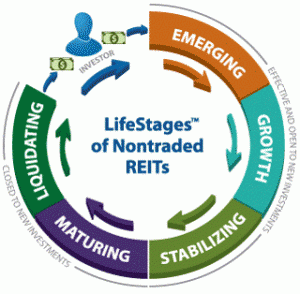Johnathan Rickman | Blue Vault
Thanks to fast-evolving innovations in fund structures, alternative investments — the broad category of assets that extend beyond stocks, bonds, and cash — are proliferating. As a result, wealth advisors and investors are learning what large institutions have known for some time: Investing in private equity, private credit, private markets, real property, and other unconventional asset classes helps diversify portfolios, generate income, reduce risk, and lower volatility.
In a previous article, we explained what makes alternative investments “alternative” and how they can potentially benefit both investors and advisors. In this article, we’ll explore the diverse range of alternative investment structures and strategies that asset managers employ depending on the investment product’s specific asset makeup and/or objectives.
Analyzing Alts
Alts can be analyzed on a couple of different levels. Broadly speaking, each investment product strategy is built around a particular structure. During development, asset managers (otherwise known as investment managers) choose the structure they think will provide the best balance of risk and return. They also consider liquidity relative to the assets and/or type of client need that is managed in the fund. The chosen structure might also seek to take advantage of a regulatory incentive or advance certain interests such as promoting U.S. small businesses, a sector of the economy, or even a geographical region.
Most people know alts by their structures: interval funds, tender-offer funds, business development companies (BDCs), real estate investments trusts (REITs), and the like.
Each structured product contains extra layers of sub-strategies specific to the assets it holds. For instance, a REIT might invest in real estate assets chosen for their market location or business model. Many debt-focused BDCs invest in a mix of secured and unsecured loans. While the number of popular alts structures may be few, no two funds are alike. The alts market offers a diverse array of investment options for wealth advisors and sophisticated investors:
Types of Alts
|
Type |
Structure |
Solution |
Did You Know? |
|
REIT |
A trust company created to spur investment in large-scale, diversified portfolios of income-generating real estate through the purchase and sale of liquid securities. |
Raises equity through an initial public offering, which is then used to buy, develop, manage, and sell real estate assets. Investors in a REIT’s common stock buy a portion of a managed pool of real estate. Income from REIT assets is distributed directly to REIT holders on a regular basis. |
REITs own over $4.0 trillion of commercial real estate assets, including public listed, public non-listed, and private equity and mortgage REITs.1 |
|
BDC |
An SEC-registered investment company that invests in primarily private U.S.-based businesses. |
Most BDCs elect to be treated as registered investment companies for tax purposes and must distribute 90% of their taxable income to shareholders each year, enabling investors to benefit from the underlying portfolio without being subject to corporate taxes. |
As of September 30, 2024, the nontraded BDC industry had $154.8 billion in assets under management. That’s up from $108.3 billion at the end of 2023.2 |
|
Interval Fund |
A type of closed-end fund with shares that do not trade on the secondary market. Instead, the fund periodically offers to buy back a percentage of outstanding shares at net asset value. |
High yields are the main reason investors are attracted to interval funds. Interval fund shares are usually offered for sale daily by the fund at the current net asset value. |
At the end of April 2025, there were 141 interval funds on the market.3 |
|
Tender Offer Fund |
A continuously offered, unlisted closed-end fund. |
Provides investors with liquidity by periodically offering to repurchase a percentage of their outstanding shares. |
At the end of April 2025, there were 138 tender offer funds on the market.3 |
Due Diligence and Investing
The alts market is growing exponentially, and more advisors and their clients are allocating to private assets. When making investment choices, both advisors and investors need to do the research. This should include qualitative, quantitative, and operational due diligence. This involves not just looking at a fund’s performance and fees but also learning more about the asset managers themselves and how they conduct due diligence. You’ll also want to ensure the various service providers you work with all meet industry standards or above.
Access to performance data on individual funds can also give you a sense of a sponsor’s historical track record and help you actively manage client portfolios. Sometimes this intel can be found on tech-enabled turnkey asset management program (TAMP) platforms or in digital marketplaces.
Unless your client is ultra-high-net-worth, you (usually) can’t invest directly with the fund’s sponsor unless your client is a qualified purchaser who has been properly vetted and qualified as a limited partner with the general partner.
To invest in alts, advisors and their clients typically work with a custodian — financial institutions that hold securities, keep them secure and provide good chain of custody such as Charles Schwab, Fidelity, J.P. Morgan, Morgan Stanley, LPL, Inspira Financial, and BNY.
Advisors can also work with broker-dealers or custodian RIAs that help advisors buy and sell financial securities. This is the usual route advisors take when investing in structures such as interval funds, tender-offer funds, and BDCs that may or may not have accreditation qualifications for clients.
In a future article we’ll dive further into the alts ecosystem and explore its different participants. Learn more about these and other types of alts and the asset managers and service providers that work with them.
Resources
1 NAREIT April 2025 REITWatch® (PDF). Data as of March 31, 2025.
2 Blue Vault Nontraded BDC Industry Review, Third Quarter 2024.
3 XA Investments via Citywire: Interval fund market hits new peak as new and established players ready launches











